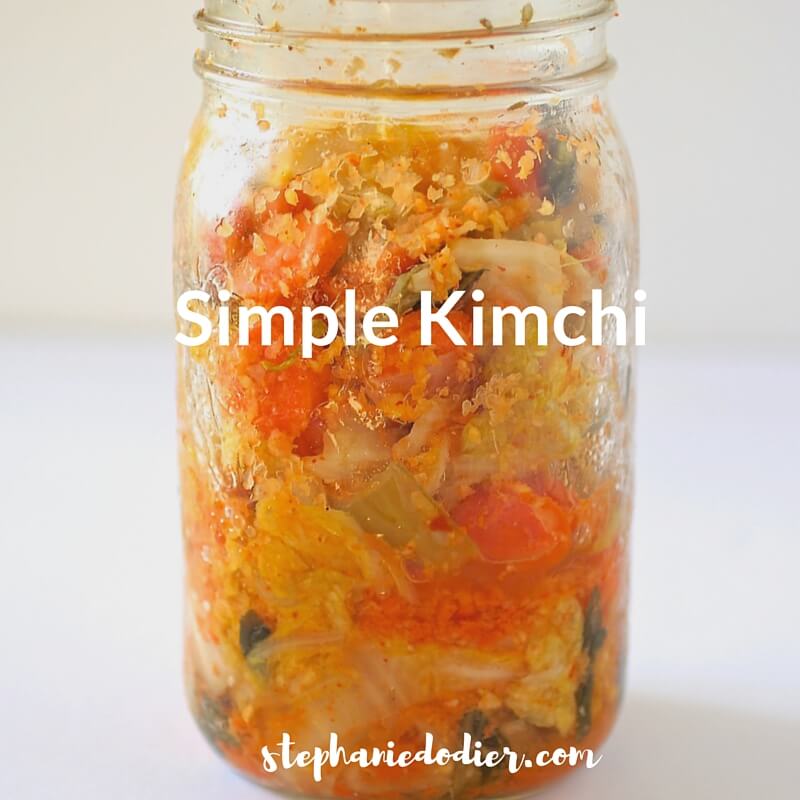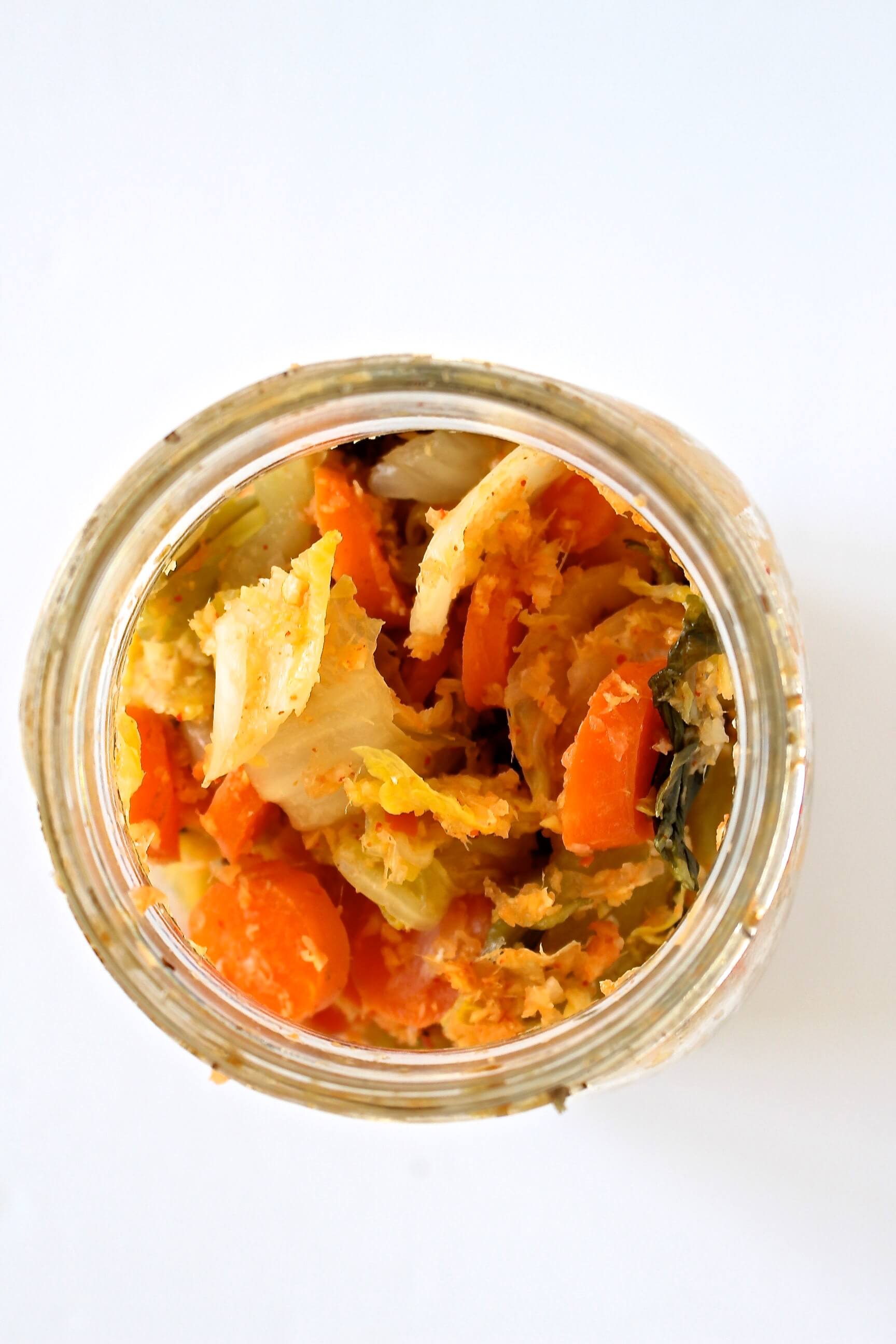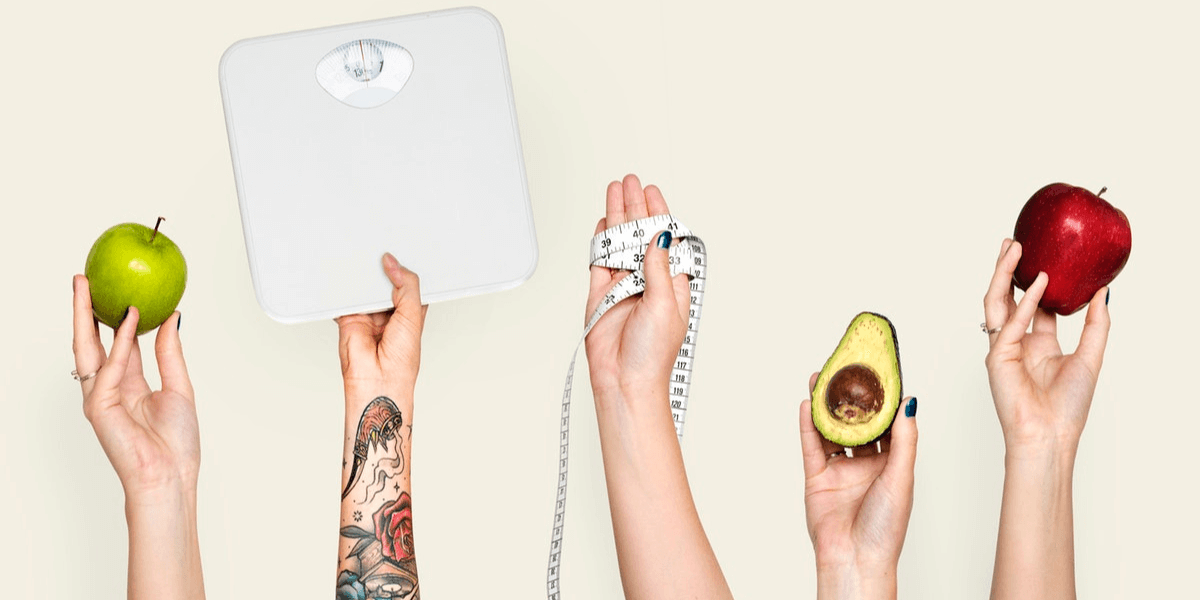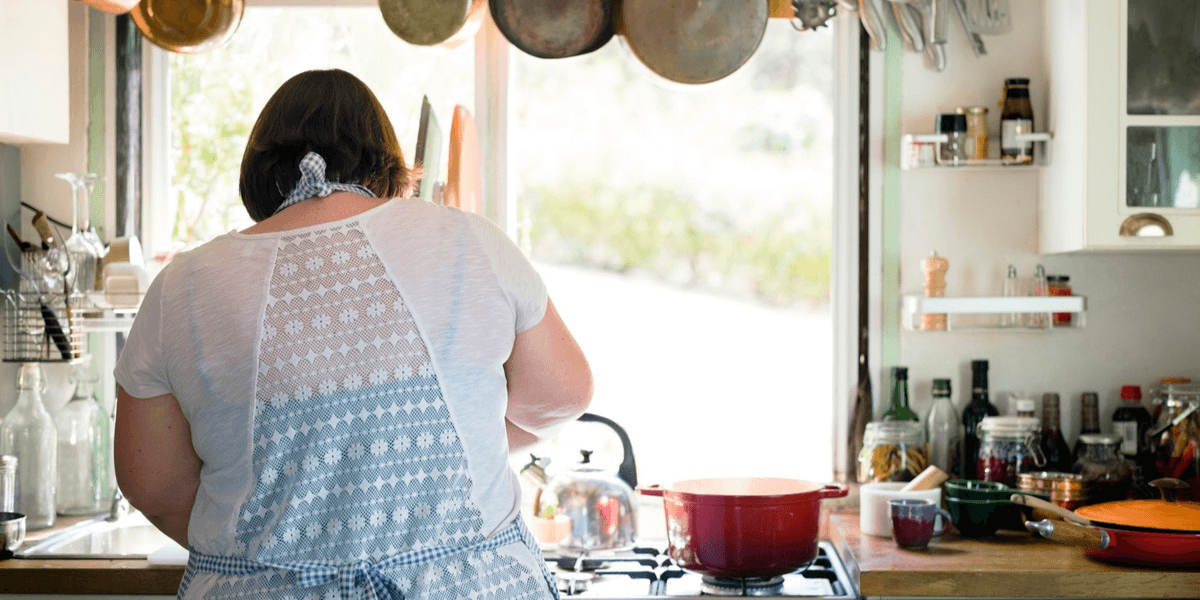 Kimchi was the last food in my fermentation journey… I learned and taught myself and the women in my free and private community how to make sauerkraut, kombucha, and yogurt but had yet made Kimchi. I somehow thought it was going to be more complicated than other fermented foods. Well, I was so wrong… my easy kimchi recipe is super simple and uses the same process as sauerkraut.
Kimchi was the last food in my fermentation journey… I learned and taught myself and the women in my free and private community how to make sauerkraut, kombucha, and yogurt but had yet made Kimchi. I somehow thought it was going to be more complicated than other fermented foods. Well, I was so wrong… my easy kimchi recipe is super simple and uses the same process as sauerkraut.
The reddish fermented cabbage dish—made with a mix of garlic, salt, chili peppers, and other spices—is served at every meal in it’s country of origin Korea. Koreans eat so much of this super-spicy condiment (40 pounds of it per person each year) that natives say “kimchi” instead of “cheese” when getting their pictures taken. Kimchi is also used in everything from soups to pancakes, and as a topping on pizza and burgers.
Traditional Food
Virtually every culture has a recipe for fermented foods that has been passed down for generations and, in some cases, since ancient times. In ancient India, for instance, it was common to enjoy lassi, a pre-dinner fermented yogurt drink. Fermented pickles are another mainstay of Indian cuisine.
Also Bulgarians are known for their consumption of fermented milk and kefir while Ukrainians have long consumed fermented foods like raw yogurt, sauerkraut, and buttermilk.
As well, various Asian cultures traditionally have eaten pickled fermentations of cabbage, turnips, eggplant, cucumbers, onions, squash, and carrots, and consume these fermented treats even today.
One of these is kimchi which is a fermented blend of cabbage, chili peppers, garlic, scallions, and other spices that can take on salty, sour, and/or spicy flavors, depending on the recipe used. My easy kimchi recipe is simply delicious!
Health Benefits of Kimchi
Fermented foods are used as a therapeutic agent in many natural healing protocols for its high content in probiotic bacteria and prebiotic fibre. Also the GAPS diet protocol is one of my specialties and relies heavily on fermented foods for the gut healing effect.
- First, Kimchi contains healthy bacteria and probiotics for the overall wellness of your digestive system.
- Kimchi is also high in Vitamin A and C due to the fermentation process.
- It is rich in powerful antioxidants along with phenols and flavonoids exert protective effect against the oxidative damage and shields the body from the harmful effects of oxygen free radicals.
- Kimchi is rich in allicin which helps to lower cholesterol levels
- Finally Kimchi is rich in selenium which helps to nourish the thyroid gland for healthy metabolism.
You can see how this easy kimchi recipe is prepared by watching this video. If you want to learn about sauerkraut, you can watch this video .
Finally, another resource for you is my digital book Healing Foods is a great resource for all your healing foods such as fermented foods, bone broth, kombucha, etc.
Easy Kimchi Recipe

Simple Kimchi
Easy and simple Kimchi recipe
- Prep Time: 360
- Total Time: 6 hours
Ingredients
- 1.5 lbs head napa cabbage, cored and chopped in 2″ strips
- 1.5 lbs bok choy, chopped in 2″ strip
- 2 Tbsp. sea salt
- 6 green onions, chopped
- 2 carrots, sliced 1/2″
- 5 garlic cloves, chopped
- 3 Tbsp. grated ginger
- 3 Tbsp. filtered water
- 2 Tbsp. chilli flakes or 1 Tbsp. chilli powder
- 3 Tbsp. sirracha sauce (optional)
Instructions
- Slice the cabbage in 2″ wide strips. Chop the bok choy in 2″ strips.
- In a large bowl,salt the cabbage and bok choy. Using your hands, massage the salt into the cabbage until it starts to soften a bit, then add water to cover the cabbage. Let stand for 4-6 hrs.
- Using a colander, drain the cabbage and bok choy.
- Make the paste: Combine the garlic, ginger, chilli flakes or child powder, 3 tablespoons water and optional sirracha sauce in a blender and process to form a smooth paste.
- In a large bowl combine the cabbage, bok choy, carrots and green onion and paste.
- Mix thoroughly. Using your hands, gently work the paste into the vegetables until they are thoroughly coated.
- Pack the kimchi into a jar pressing down on it until the brine rises to cover the vegetables. Leave at least 1 inch of space. Seal the jar with the lid.
- Let it ferment by standing at room temperature for 7 days. You will need to “burp” the jar every 2 days by quickly opening the jar to release the pressure.
- After 7 days taste the kimchi. If you like the taste, place the jar back into the refrigerator. You can continue the fermentation for another 7 days for sharper taste.
Notes
- Use salt that is iodine-free and anti-caking agents which can inhibit fermentation.
- Chlorinated water can inhibit fermentation, so use spring, distilled, or filtered water if you can.





































